Using USB-C to charge a Mavic Air?
Somewhere I got the crazy idea that it would be fun to bring a camera drone on my bike tours. Every bit of weight counts, of course, so I got a portable one called a Mavic Air.
It’s great, but it uses a custom battery that can only be charged with a large power adapter, and the adapter weighs half a pound. I’m already packing a 5-port USB charger that has one USB-C output suitable for charging a MacBook. That should put out more than enough voltage to charge the Mavic battery. Why can’t I use that?
Well, it turns out I can.
This is a little widget called a PD Buddy Sink. You can plug it into a USBC charger like so:
Then you can program it to ask for any voltage that a USBC power source can supply, and make it available. For example, 15 volts at 2 amps, which is enough to feed into this Mavic Air charger designed to plug into a vehicle’s accessory port:
I removed part of the casing to expose the wires, then linked them up to the PD Buddy Sink, like so:
Then I decided to get arts-and-craftsy. I formed a gross looking extension to the car adapter case, using some two-part epoxy and silicone glue. Now it looks like the adapter is digesting the PD Buddy. Mmm! Delicious!
Using my MacBook, I then programmed the PD Buddy Sink to ask my power adapter for 12.5 to 15 volts at 3 amps, with 15 volts preferred:
And after writing the configuration to the PD Buddy, I plugged it in, and presto! It started charging.
On the left, I’m using the 5-port USB charger to charge my MacBook, with a digital USBC power meter attached. The MacBook has negotiated for 20 volts and is getting about 19 volts. On the right, I’ve plugged the same USB charger into my Frankensteined car adapter, and it’s negotiated for 15 volts. Success!
(If you look closely you can see the adapter is pulling only 0.005 amps. That’s because the Mavic Air battery is fully charged.)
So, was it worth it? Well, I weighed my new Frankensteined adapter, and it’s a little less than 1/4th of a pound. So I’ve saved 1/4th of a pound, but I’ve lost the ability to charge my laptop and my battery at the same time, and lost the two extra USB ports that the power brick provided. Nah, it wasn’t really worth it. But I had a good time!

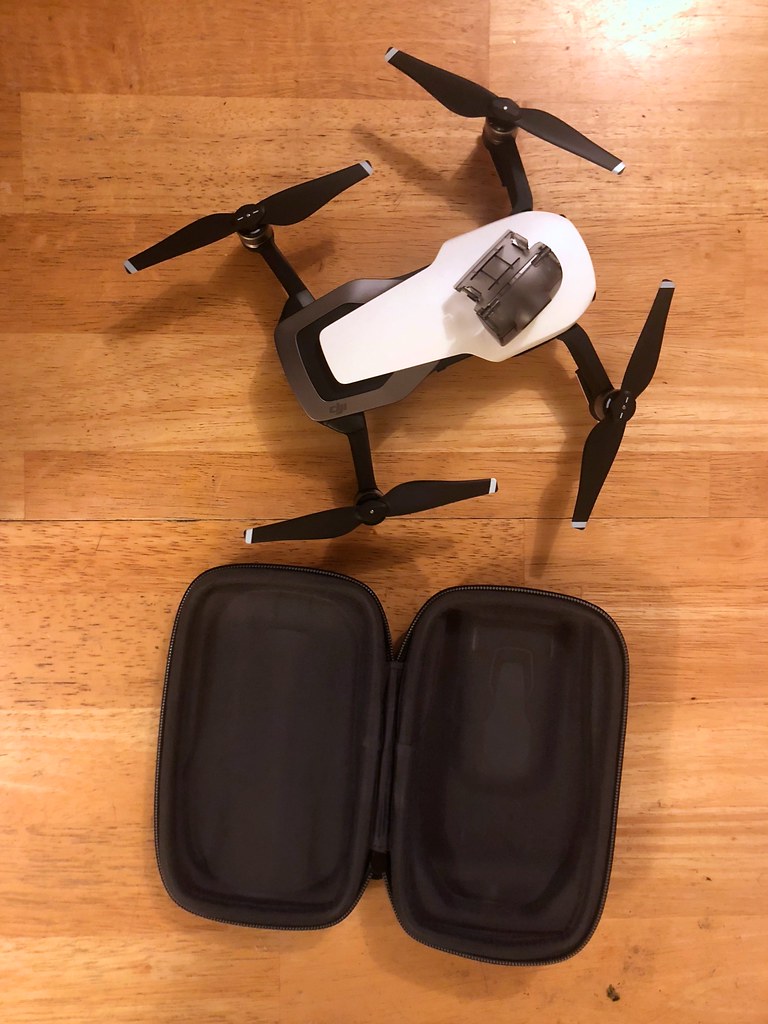
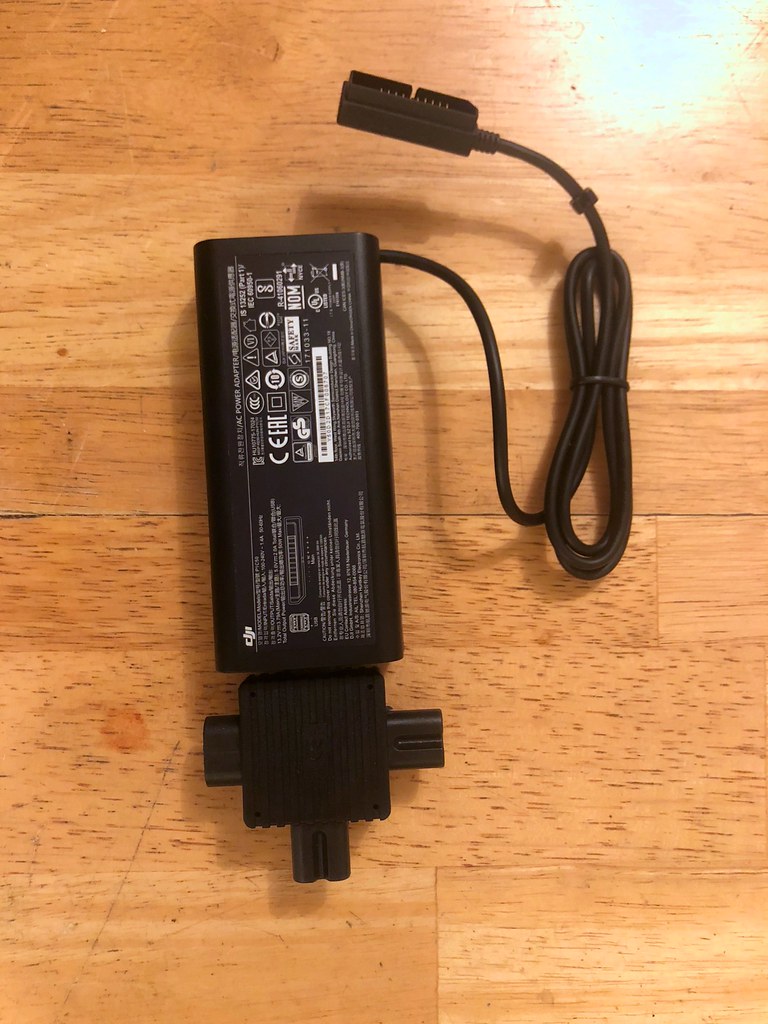
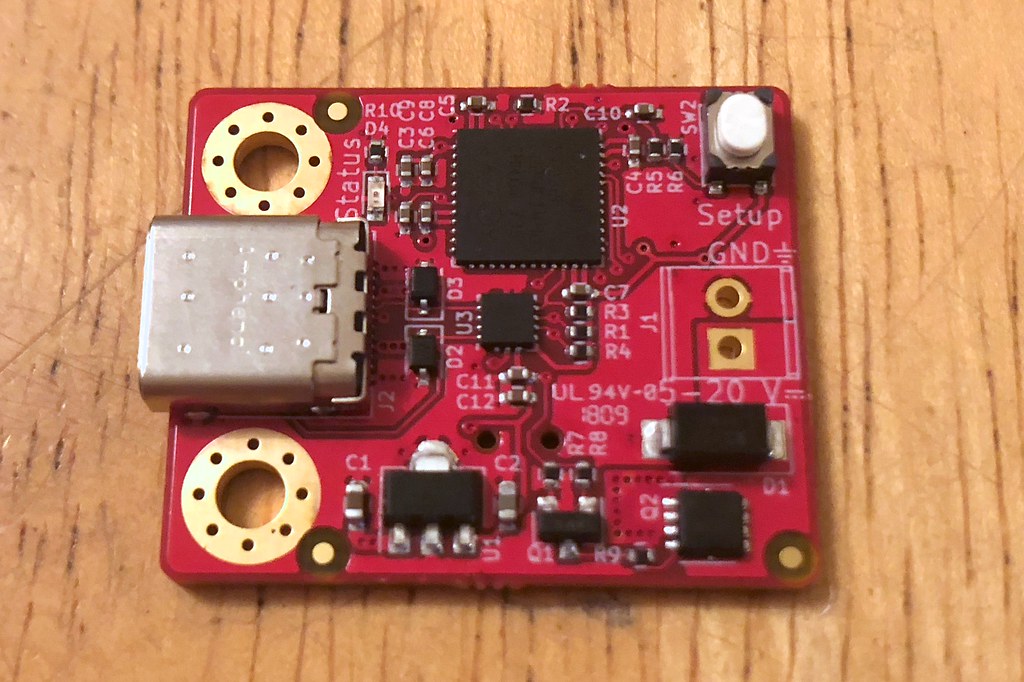
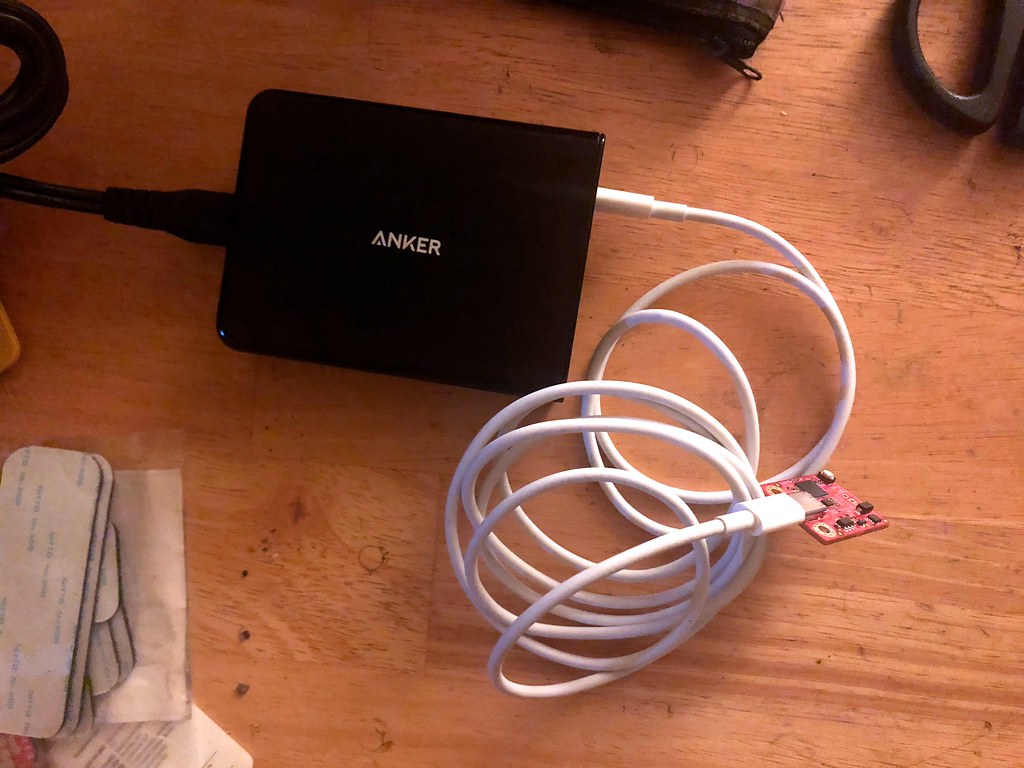
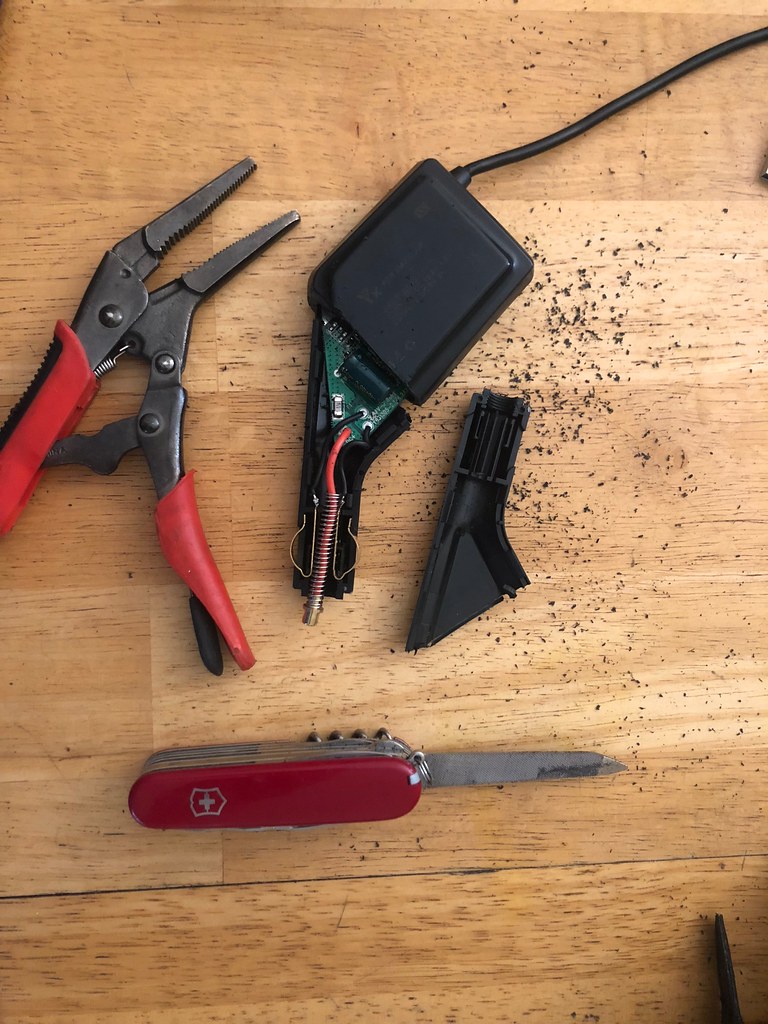
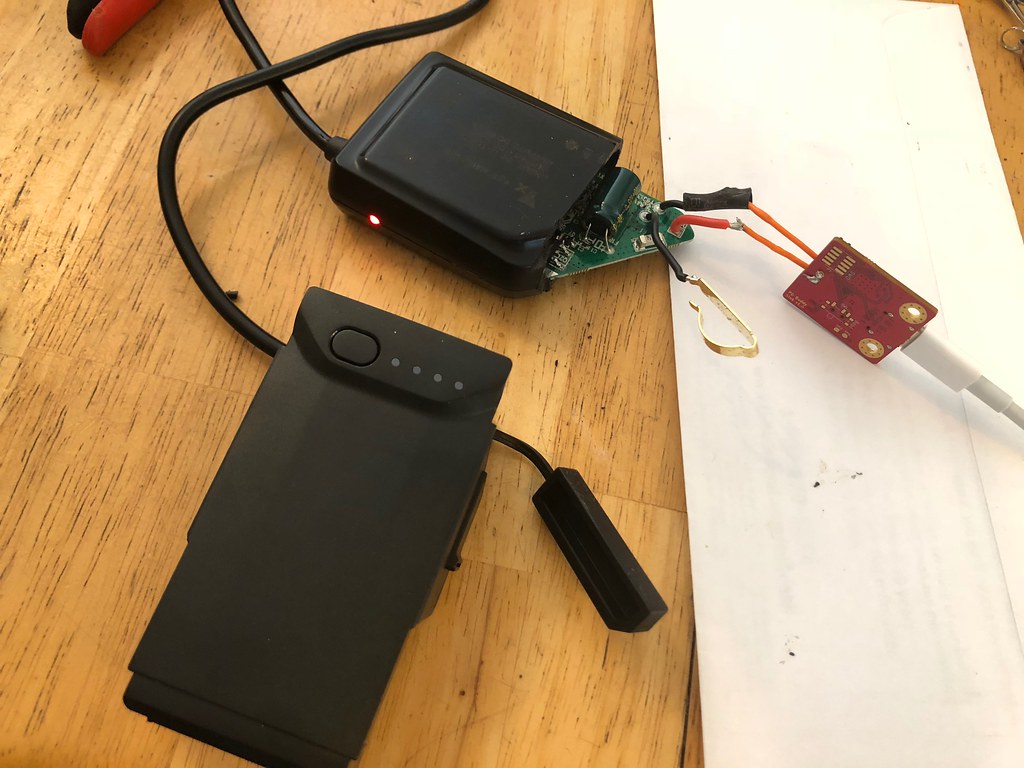
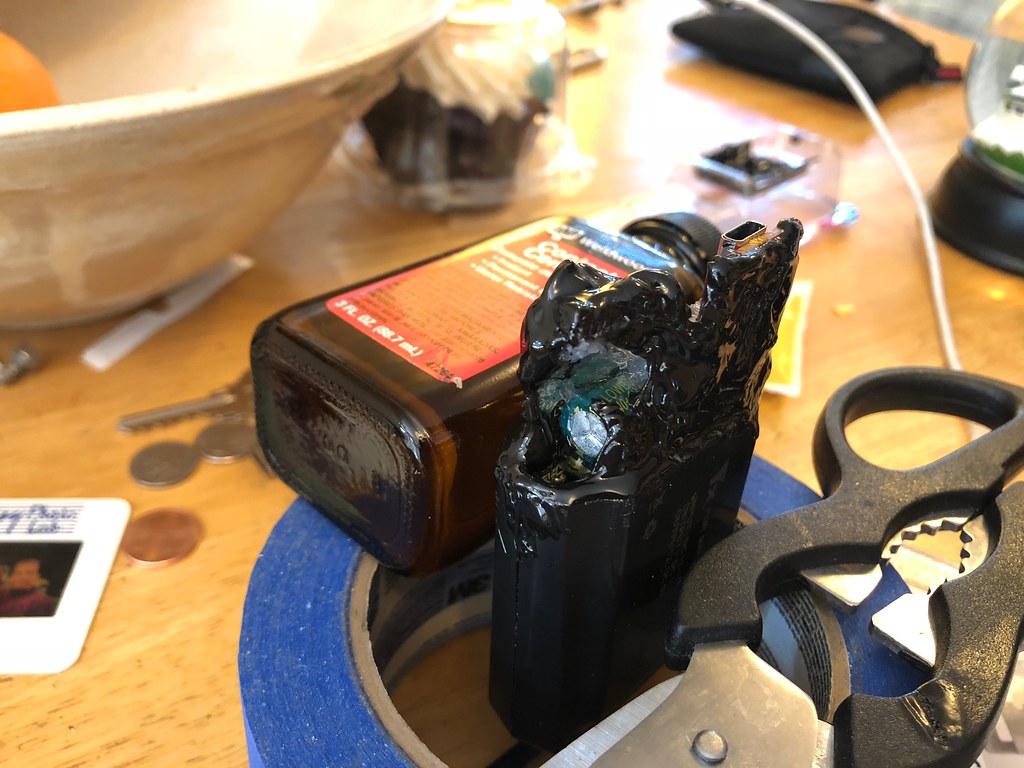
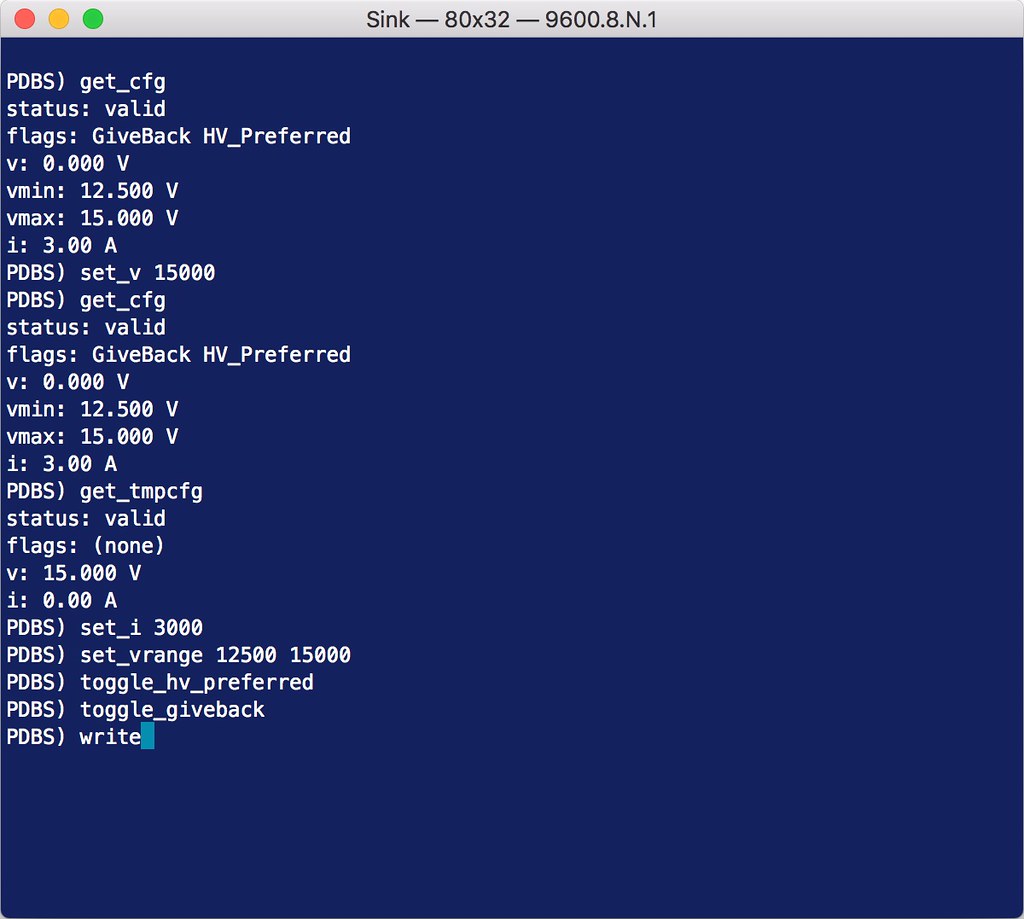
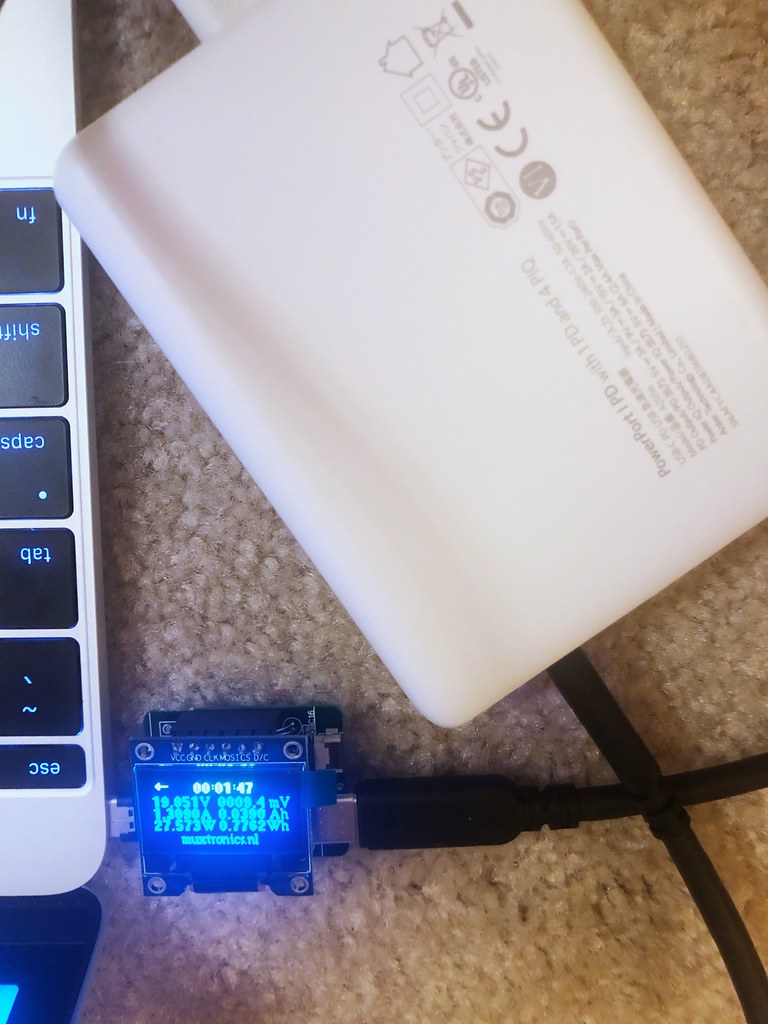
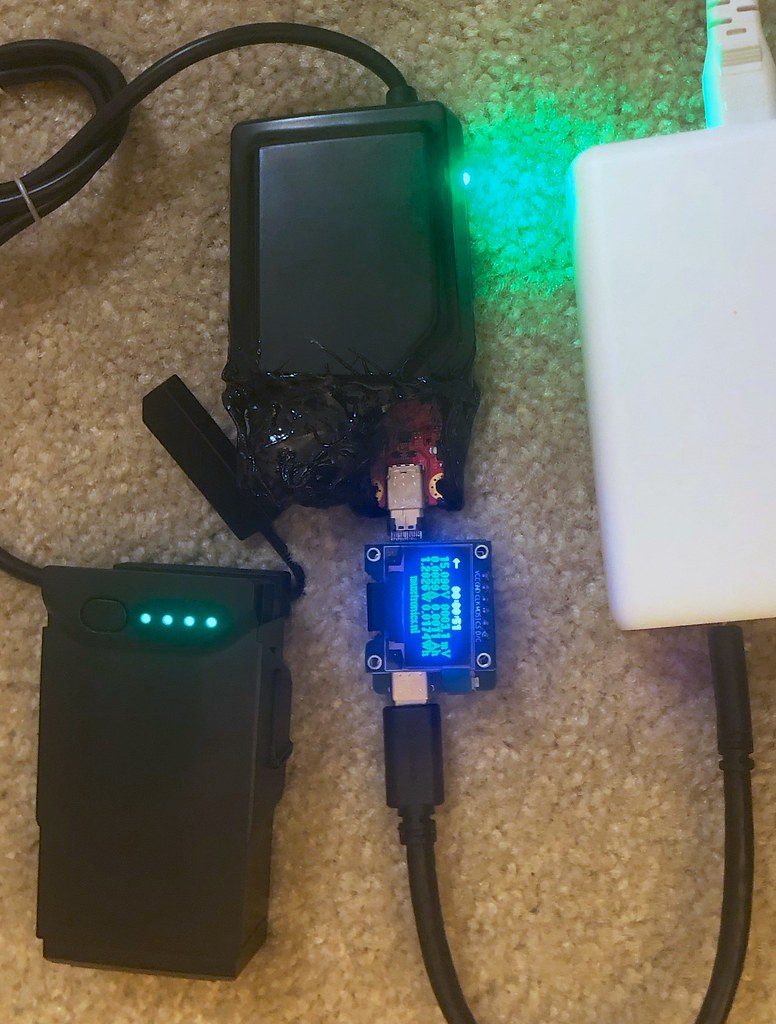
Hey It appears you plug the adapter into the wall. Could you in theory use a Power brick as your power source?? Like a Anker battery and charge the Mavic air battery from the brick? True off grid charging? No plugging into wall?
https://www.amazon.com/Anker-PowerCore-Portable-Double-Speed-Recharging/dp/B01JIWQPMW/ref=sr_1_4?ie=UTF8&qid=1538089752&sr=8-4&keywords=anker
With this Frankensteined device, yes, assuming the Anker battery puts out 15 volts, which is a pretty good assumption.
Technically a USB-PD battery could put out 20 volts, 9 volts, or even just 5 volts, and still charge a laptop. Slowly, in the case of 9V, and very slowly in the case of 5V. But most laptops that charge with USB-PD tend to ask for 15 or 20 volts. The PD Buddy will negotiate for that just like a laptop would, and you could charge a Mavic Air battery off an Anker battery.
Thanks for the inspiration – I also have the same set up, it’s kinda annoying they made the Mavic Air’s battery not compatible with USB-PD charging despite selling it as a travel drone. It’s especially bothersome that the batteries have a safety feature that self-discharges to 65% after about 7 days. If I’m on a 2 week long expedition in the field I only get about 12 min flight time from each battery with no way of topping them up afterwards.
Thank you for doing the pioneering work and Clara’s PD Sink Buddy, I have rigged up something similar. One issue that I find is that the car charger actually expect a input Ampage of around 6A, And most USB PD chargers can only delivery up to 3A at 12 and 15V (some can do 5A @ 20V).
So the draw for the current is larger than the power supply can maintain. On my set up, I find that there is constant cycle of the charger tries to draw too much current, and either the PD power supplier’s, or the charger’s safety watchdog kicks in and rapidly drops the voltage, and then resumes it after a second or so.
My car charger coems with an LED light and it blinks as the voltage drops and reboots. In the end it does manage to charge 1 and 2 batteries. But I wonder how much of a strain it is on the charger and power supply and the PD Buddy Sink.
I’m having a think to explore if there is a way around this problem. Cheers.